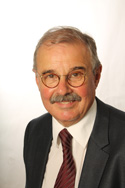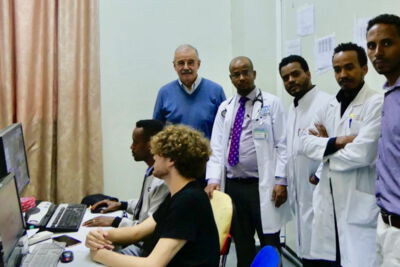Cardiac MRI Unit
After the functionality of the cardinal software and hardware of the magnetic resonance imaging device in Ayder Hospital in March 2019 by cardiologist Dr. Christian Leuner had been successfully tested, it was agreed that on his next visit, with the help of a medical radiographer who specializes in cardiac MRI examinations, he would conduct a workshop with the local regular staff and examine the first Ethiopian patients. This would be done to train the cardiologists in the diagnosis and the local radiographer in the creation of the images.
The management of the radiology and MRT department at Ayder Hospital and the radiology technicians there were very interested in expanding the possibilities of their MRI scanner. Cardiologists continued to be very interested in this method of cardinal diagnostics, which is becoming increasingly important worldwide. Because of the actual great need for MRI examinations of the skull, the workshop was carried out at the end of regular working hours and beyond.
With the willingness of the Bielefeld MRI radiographer Simon Hamza to come to Mekelle for three weeks, the basis for a successful job was laid. He has performed cardio-MRI examinations on a daily basis at Bielefeld Clinic for many years. Thanks to free time as a retiree, Dr. Christian Leuner in a combination of extensive textbook study and several weeks of practical work in the department for cardiac magnetic resonance imaging under the guidance of the cardiologist Dr. Jens Reinhard in the Bielefeld Clinic prepared for the basic workshop in the Ayder Hospital.
So he has given introductory lectures on the method in Ayder Hospital and the basic evaluations with on-site incomplete evaluation software with the cardiologist Dr. Samuel Berhane started.
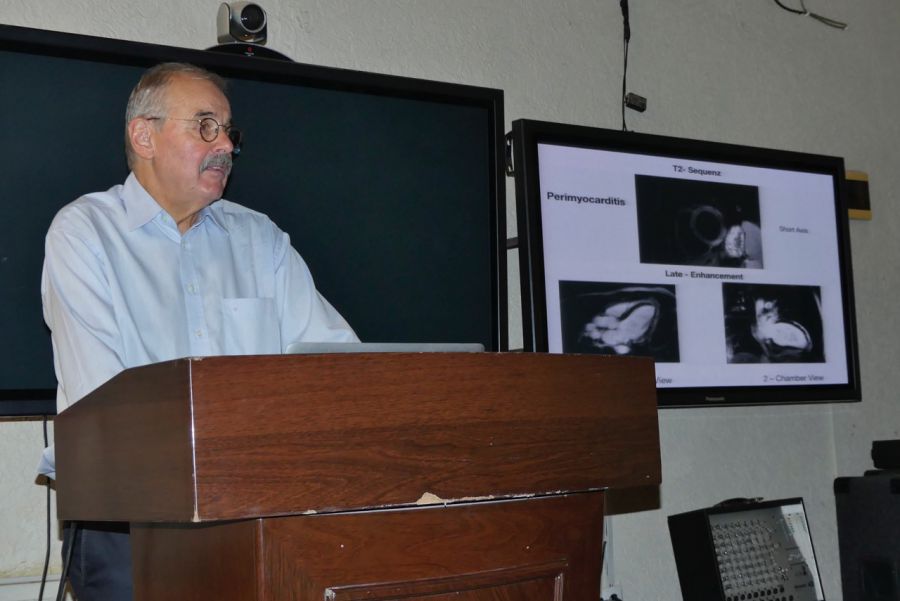
The practical implementation of the investigations proved to be surprisingly difficult. A first obstacle was that, contrary to expectations, the existing adhesive electrodes for the ECG leads had metallic components that caused strong disturbances in the MRI image. The electrodes suitable for MRI were not available. Then it was surprisingly difficult to get the patients to do the essential breathing maneuvers. This involves the need to hold the air in deep exhalation for approx. 30 seconds during image acquisition. It turned out that people who live in the villages are not familiar with the need to breathe out and hold their breath. In the national language Amharic and the local dialect Tigrinya there is no vocabulary for: "In and out breathing" and for "Holding your breath". This breathing maneuver was only successful to perform for some of the patients and only gradually after demonstrations that had been adapted several times and numerous experiments with different combinations of words.
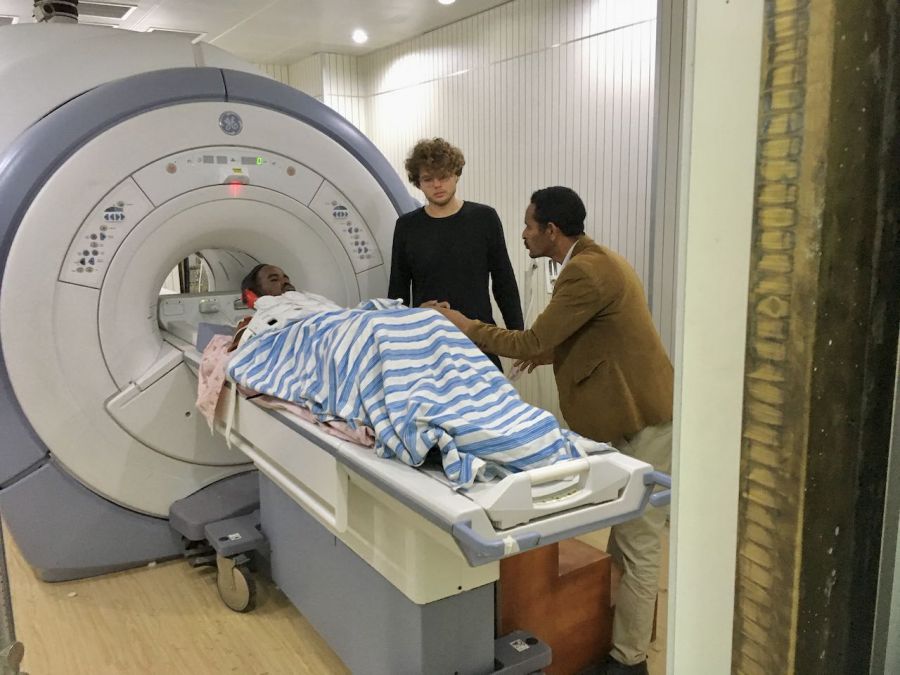
The smooth, low-oily skin of the Ethiopians also required an unusually intensive, mechanically rubbing preparation of the skin surface for the adhesive electrodes. Since the contrast agent gadolinium, which is necessary for a large part of the examinations, is quite expensive, it was favorable that the test patients paid for it from the clinic.
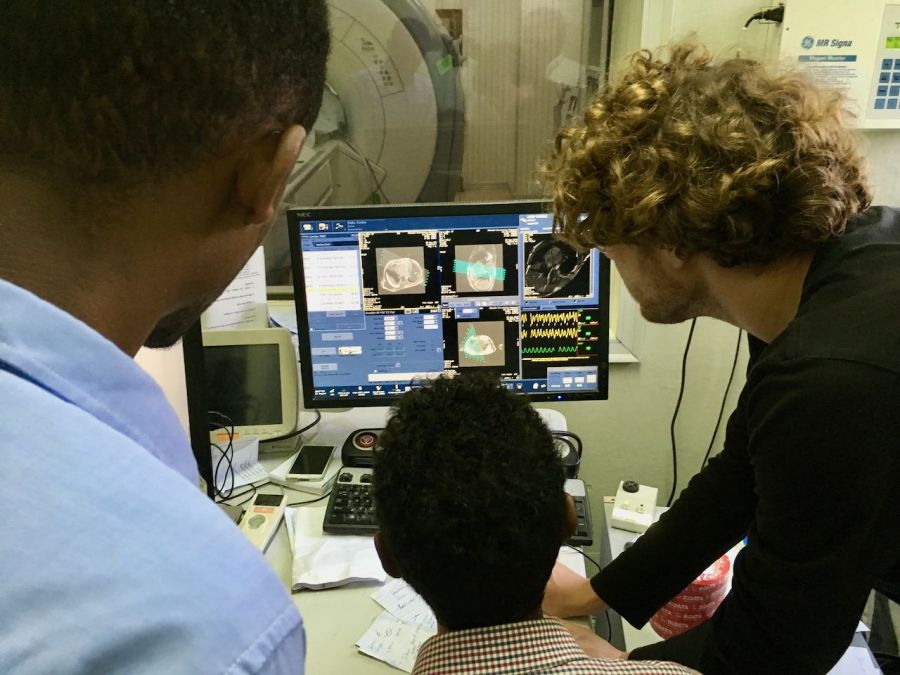
To ensure that the examination was carried out quickly, Simon Hamza provided richly illustrated instructions for the MRI technicians, who call themselves "Radiographers". However, it turned out that working according to written instructions for the radiographer is not a very habitual way of working.
After several days of experimentation, it was finally possible to create some evaluable examinations that formed the basis for the first training units for the medical assessment of the results for the Ethiopian cardiologists, who were naturally very limited in their free time.
As already experienced in the many previous years, the introduction of a new, in this case also technically demanding method, always takes much longer than we expected in this surrounding.
Based on this experience, we will conduct a follow-up workshop during a visit in February / March 2020.
On March 14th 2019, induced by and together with the German Etiopia-Witten NGO Cardiologist Dr. Christian Leuner MD, the Ethiopian cardiology experienced internist and Assist Professor from Ayder Hospital Hagos Kahsay Gebregiorgis MD did for the first time the testing of a cardiac magnetic resonance (CMR) procedure in Ethiopia.
This had been become possible with the medical engineer from the MRI providing company Infinity PLC from Addis Abeba, Mr. Fesseha Mehari.
The skilled x-ray technicians from the department of radiology of Ayder Hospital, headed by the radiologist Assist Professor Tegegen Abebe MD, installed the needed equipment and tested professional the new proposed MRI protocols.
The younger brother of Hagos Kahsay Gebregiorgis MD, volunteered as a test patient with great patience the time-consuming and very nosy procedure.
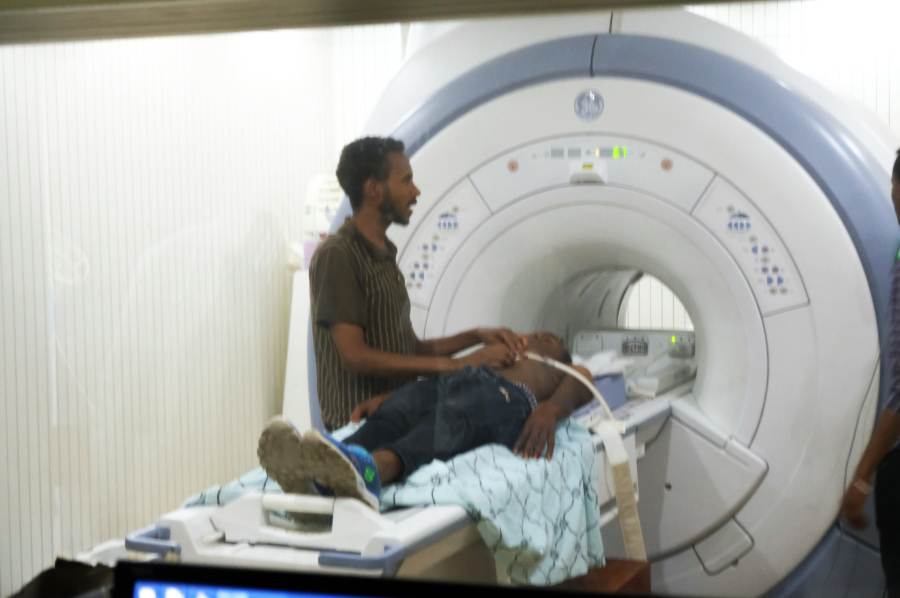
The pictures and movies obtained in the typical specialized format „DICOM“ showed, that the system is fully functional.
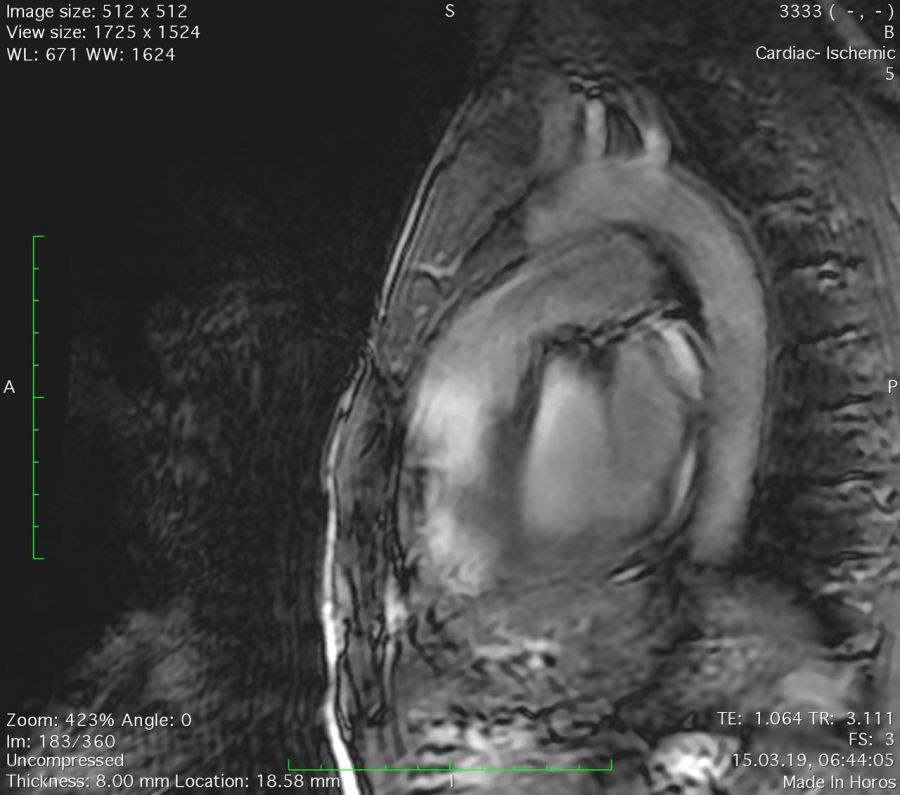 |
 |
This diagnostic technique will be done in close cooperation between radiologists and cardiologist.
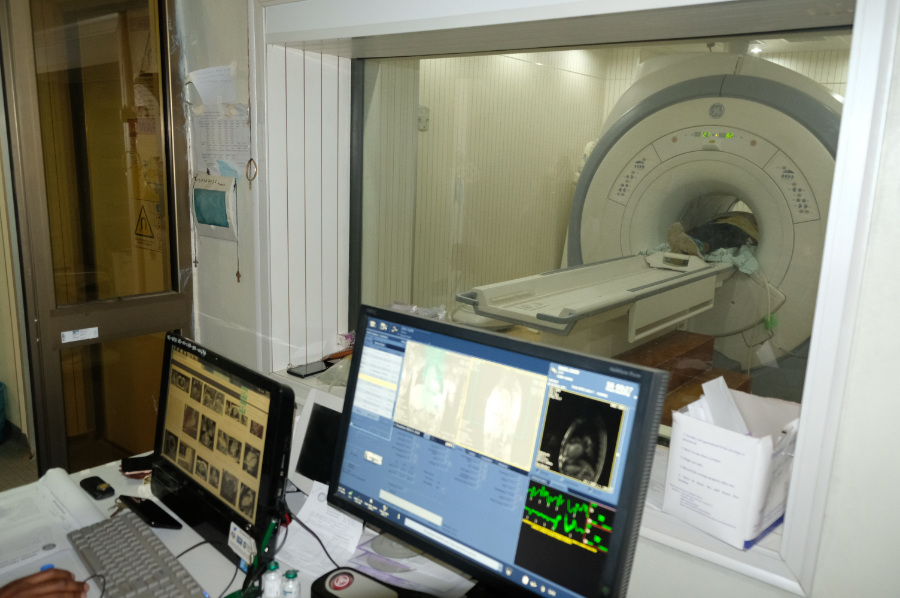
This positive results make it now possible to start a training program for members of the cardiology unit of Ayder Hospital for CMR evaluation. Therefore, Hagos Kahsay Gebregiorgis MD will have his first exposure to high end CMR in a three weeks visit in the Department of Cardiology of Klinikum Bielefeld in Germany in March 2019. This followed in July 2019 by a one-year educational stay in a cardiology center in South Korea on non-invasive cardiology.
Parallel this there will be efforts to bring in the meantime CMR teachers to Ayder to educate some of the cardiologists also in this corner stone of cardiology diagnostics.
The cardiac MRI staff
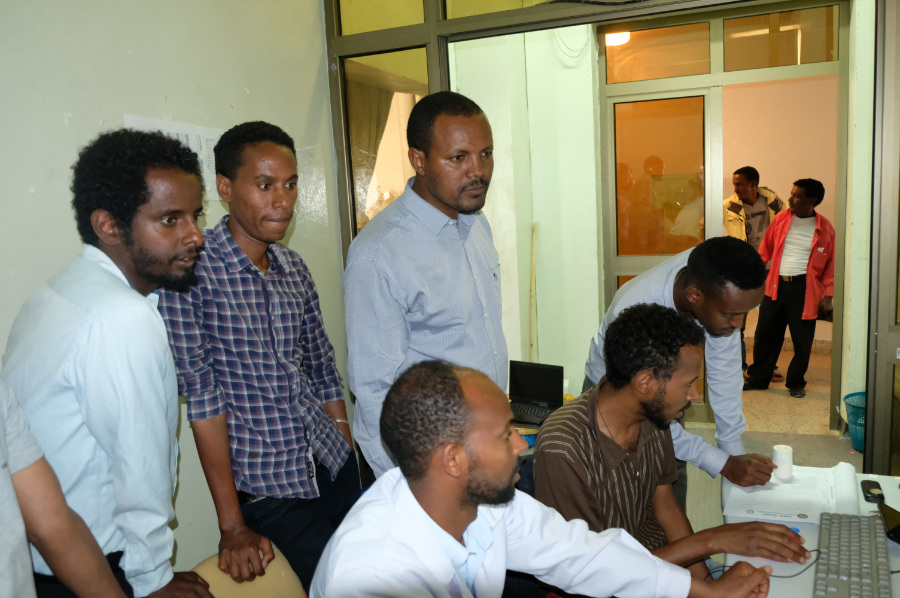
From left to rigth: Fesseha Mehari (Med. engineer Infinity-et PLC Addis Abeba), Behre Wadey (1), Tesfay Abrha (1), Ass. Prof. Hagos Kahsey MD Ayder Hospital, Musie Haile (1) Gebrehiwot Birhanu (1)
(1) MRI technician Ayder Hospital (Head technician Meron Kiros)
Author:
